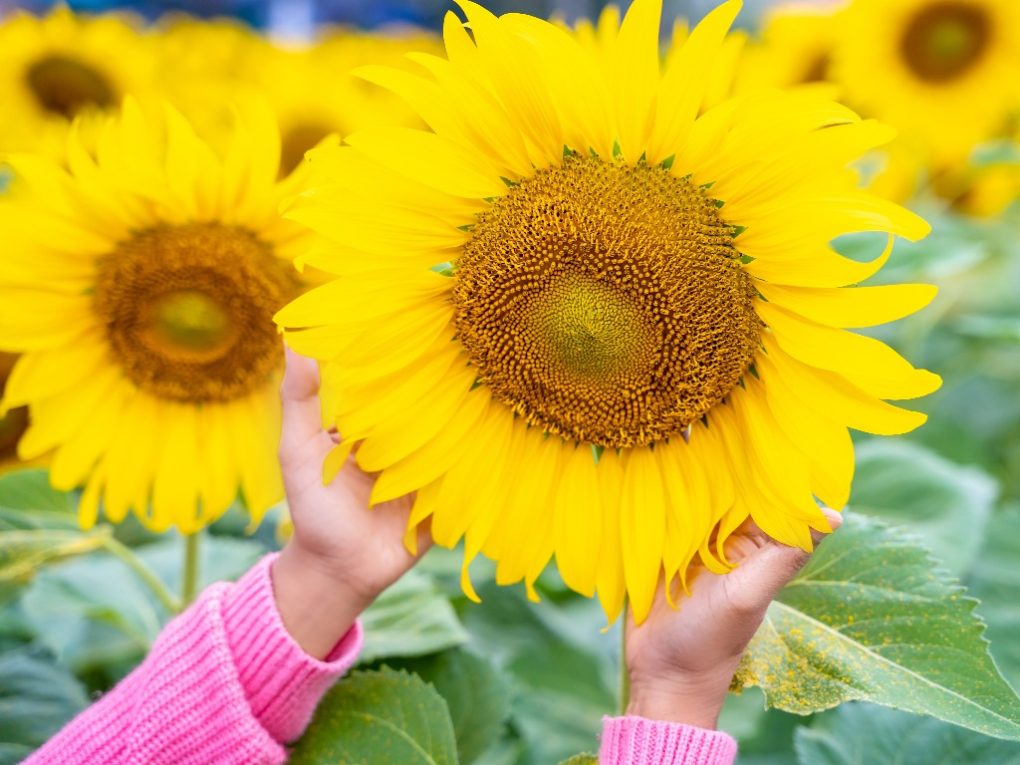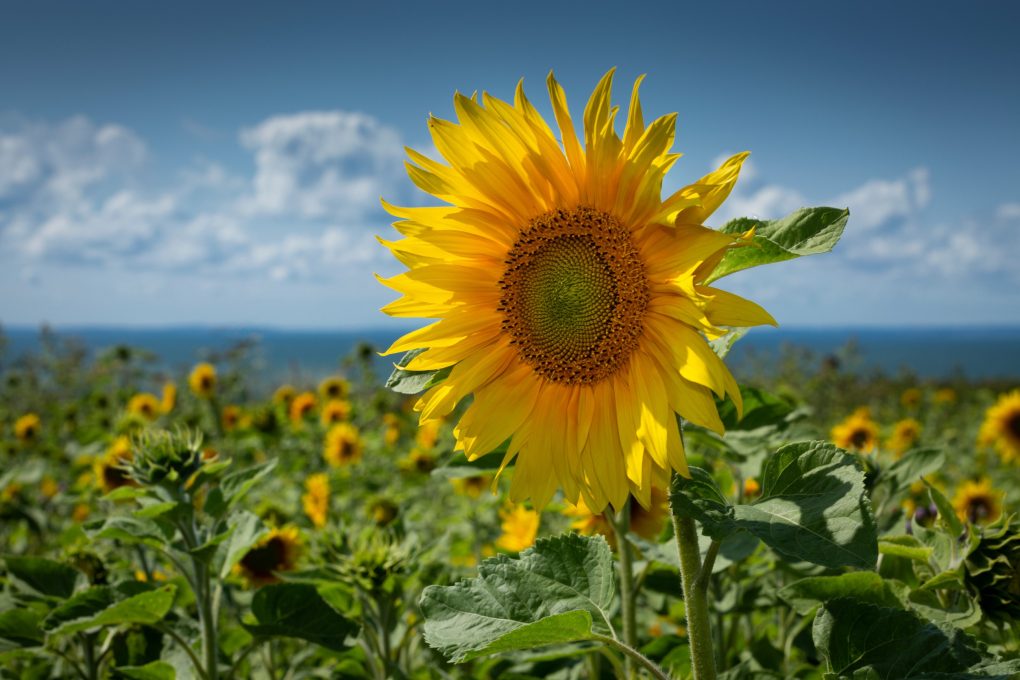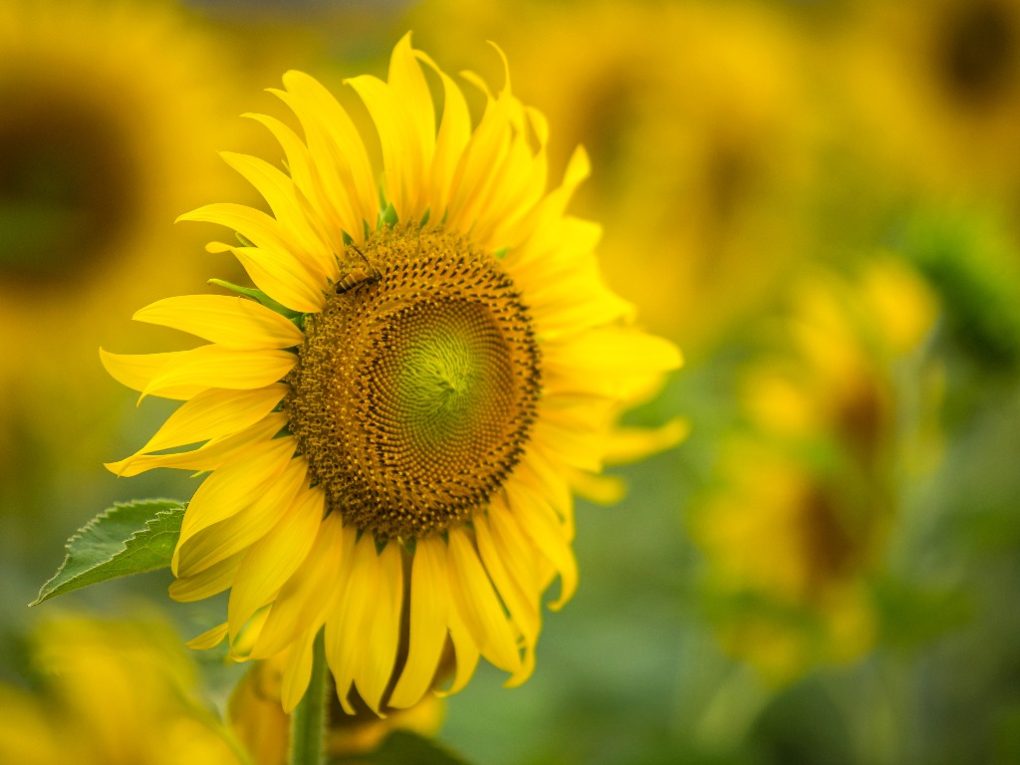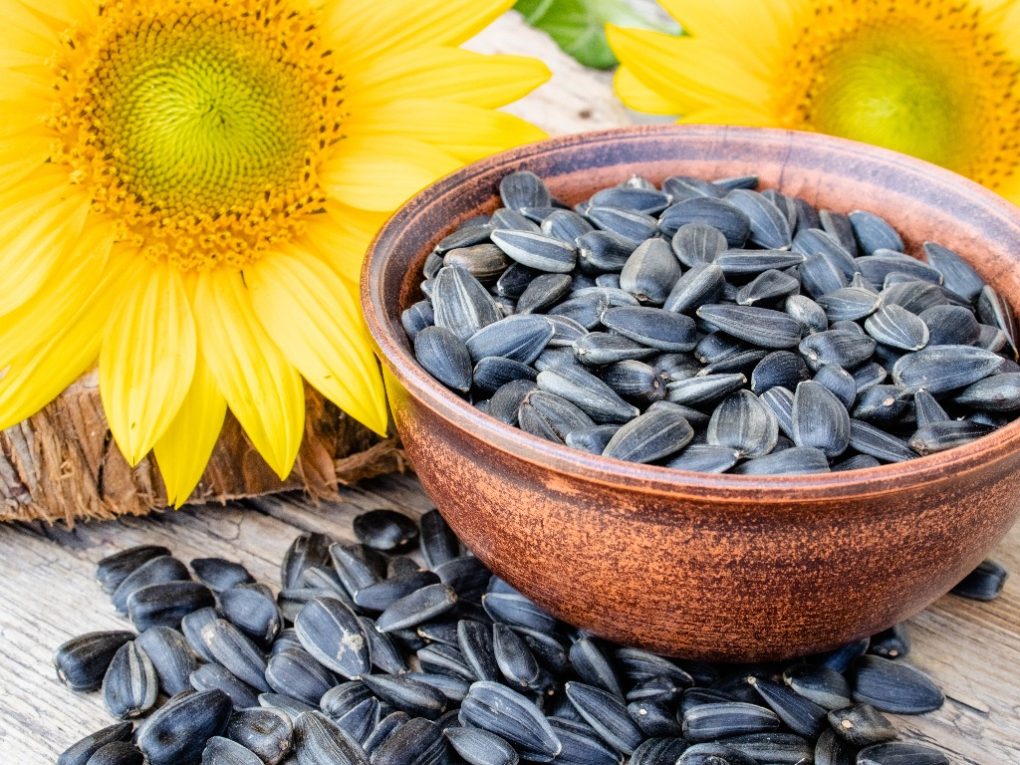Is Sunflower a Flower: Differentiating a Sunflower From a Typical Flower
Yes, a sunflower is a flower. However, the full bloom of a sunflower consists of many flowers. A sunflower head is made up of hundreds and, in some cases, thousands of individual flowers that are clustered tightly together. These flowers, known as florets, are arranged in a spiral pattern on the head, with the outermost flowers being the largest and the innermost flowers being the smallest.
The common misconception is that sunflowers have thorns, but this is false. Sunflowers are known for their tall, sturdy stems and large, bright flowers, but they do not produce thorns or sharp structures.
Sunflowers have two types of florets: ray florets and disc florets. Ray florets are the outermost flowers on the sunflower head, and they have long, slender petals that radiate out from the center of the head. They are sterile, meaning they don’t produce seeds but are essential in attracting pollinators to the sunflower head, such as bees and butterflies.

Disc florets are small, tubular flowers found in the center of the sunflower head. They are arranged in a dense, circular pattern and are surrounded by ray florets. Disc florets have both male and female reproductive parts and are responsible for producing the sunflower’s seeds. The disc florets are also where the sunflower’s oil-rich seeds are formed.
Table of Contents
What Is a Sunflower?
Sunflower is a tall, annual plant known for its large, bright yellow flower heads. The scientific name for the sunflower is Helianthus annuus, which translates to “annual sunflower”. Sunflowers are native to North and Central America but are now grown worldwide as ornamental plants and a popular snack and cooking ingredient for their seeds.
Sunflowers are part of the flowering plant family Asteraceae, commonly known as the aster or daisy family. Sunflowers are characterized by their long stems and large flower heads with edible seeds. These flower heads resemble the sun and can grow over 12 inches in diameter. Sunflowers can grow up to 14 feet tall and have large, broad leaves arranged alternately on the stem.
The flowers are typically large and showy, with a central disk of tiny flowers surrounded by bright yellow petals. Sunflowers are also unique in that they exhibit heliotropism, which means they turn their heads to follow the sun’s movement throughout the day. This is considered an adaptation that allows them to maximize their exposure to sunlight for photosynthesis, making them easy to grow and manage in a garden.
Differentiating a Sunflower From a Typical Flower
Size
Sunflowers are much larger than most flowers. While the size of flowers can vary greatly depending on the species, sunflowers are known for their large flower heads, which, as mentioned, can grow over 12 inches in diameter. In comparison, many common flowers, such as roses, daisies, and lilies, typically have flower heads that are only a few inches in diameter.
It’s worth noting that some other flowers can also grow quite large. For example, the Rafflesia arnoldii, a parasitic plant found in Southeast Asia, produces the world’s largest flower, growing up to 3 feet in diameter. However, the Rafflesia arnoldii is a rare and unusual plant; sunflowers are generally considered among the largest and most showy of all common garden flowers.

Petals
Sunflower petals are relatively large and flat, with an elongated, teardrop shape. They are much larger than the petals of many other flowers, typically smaller and more rounded. They also have a single row of petals, while many other flowers have multiple petals. This gives the sunflower its characteristic appearance of a large, yellow disk with a ring of petals around the edge.
When it comes to comparing sunflower and dandelion petals, there are a few notable differences. Sunflower petals are known for their large size, often measuring up to a foot in length, and their bright yellow color. In contrast, dandelion petals are much smaller and typically have a lighter shade of yellow.
The most common color of sunflower petals is bright yellow, but other sunflowers are also available, including orange, red, brown, and even white. Some sunflowers have been cultivated to have specific colors, such as “Lemon Queen” with pale yellow petals, “Italian White” with creamy white petals, or “Chianti” with red petals and a dark center. Such bright colors are not commonly seen in other flowers.
The texture of sunflower petals is generally smooth and glossy, giving them a waxy appearance. In contrast, the petals of many other flowers are more velvety or matte in texture. This smooth texture is due to their relatively thick cuticle, the waxy layer covering the petal’s surface. This cuticle helps to protect the petal from damage and dehydration and gives it a shiny appearance.
In comparison, the petals of many other flowers, such as roses or peonies, are often more velvety or soft to the touch. The petal’s surface is covered in small, fine hairs that give it a fuzzy or matte appearance. The texture of petals can vary greatly depending on the flower species, but sunflower petals are generally unique in their smooth, waxy texture.
Disc Flowers
Sunflower disc flowers are the small flowers that make up the central disk of the sunflower. These flowers are much smaller than the petals and are arranged in a tight, densely packed cluster. The disc flowers of the sunflower are important because they are the structures that produce the seeds used for food and other purposes.

Each disc flower has five lobes that form a narrow tube. The tube’s center contains the flower’s reproductive organs, including the stamens (male reproductive organs) and the pistil (female reproductive organ). The stamens are the structures that produce pollen, while the pistil is the structure that contains the ovules, which will eventually become seeds if fertilized.
When the sunflower matures, the disc flowers begin to dry out, and the seeds inside them begin to develop. As the seeds mature, the disc flowers dry out and turn brown, giving the sunflower its characteristic brown, spiky center. Disc flowers also play an important role in pollination, as they produce the pollen needed to fertilize other flowers’ pistils.
Heliotropism
Heliotropism is the tendency of a plant to turn or grow in response to the sun’s direction. Sunflowers are known for their strong heliotropism, which means they follow the sun’s movement across the sky during the day.
In the morning, sunflower heads typically face east, towards the rising sun. As the sun moves across the sky during the day, the sunflower head will gradually turn to follow it, and by evening it will be facing west, towards the setting sun. During the night, the sunflower head will reorient itself to face east again in preparation for the next day.
The heliotropic movement of sunflowers is controlled by a growth hormone called auxin, produced in the plant’s stem. As the sunflower stem elongates, it causes the head of the plant to follow the movement of the sun. This movement is important for sunflowers because it allows the plant to maximize its exposure to sunlight, which is essential for photosynthesis and growth. By following the sun, sunflowers can capture more light and energy than they would if they faced a fixed direction.
Seeds
Sunflower seeds are relatively large and flat, with a characteristic oval shape and a pointed end. They are much larger than the seeds of many other flowers, typically smaller and more rounded. Sunflower seeds are produced in a dense cluster of small flowers in the center of the sunflower head, in contrast to other flowers, which may produce seeds differently, such as in a pod or capsule.

Sunflower seeds are a popular snack food ingredient in many recipes. They are one of the few flower seeds commonly consumed by humans, while the seeds of most other flowers are not commonly eaten. They are high in protein, fiber, and healthy fats, making them nutritious and filling food. They are also a good source of vitamins and minerals, including vitamin E, magnesium, and selenium.
